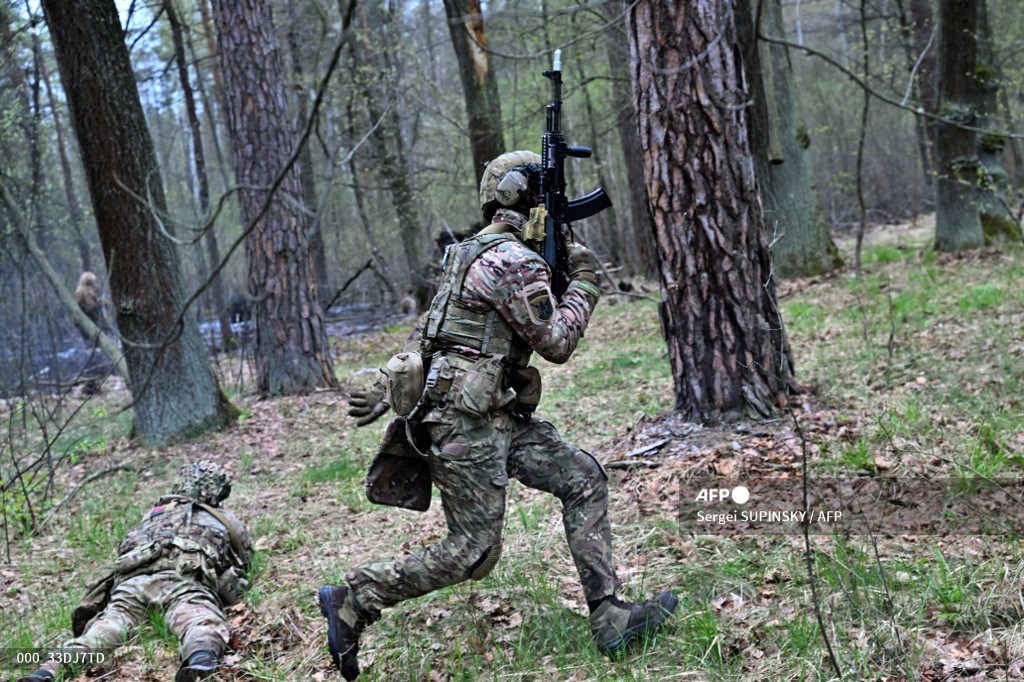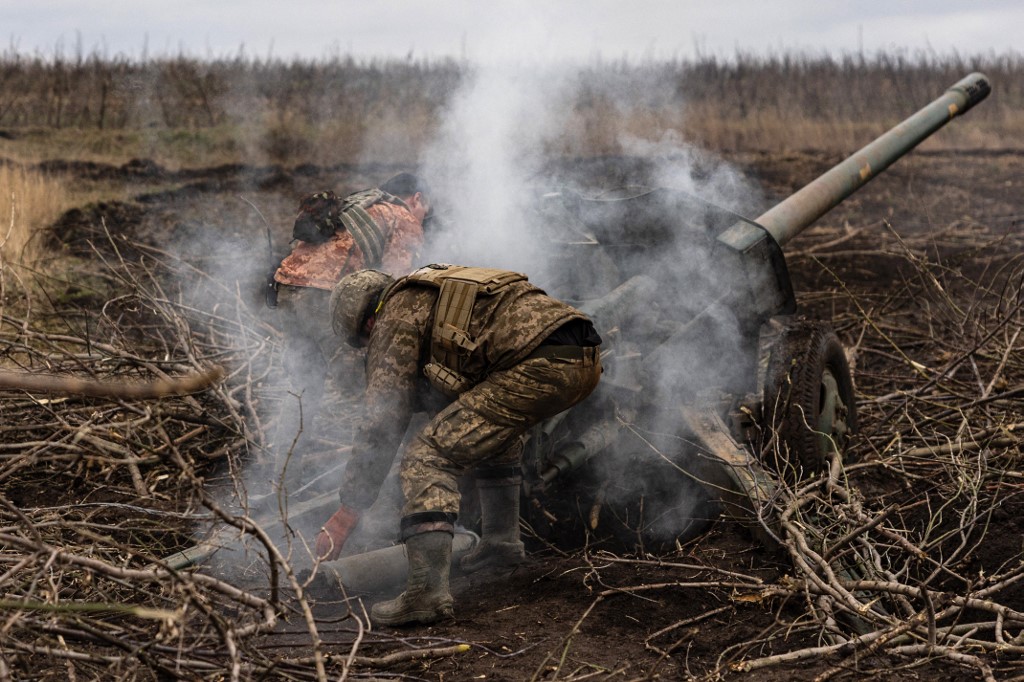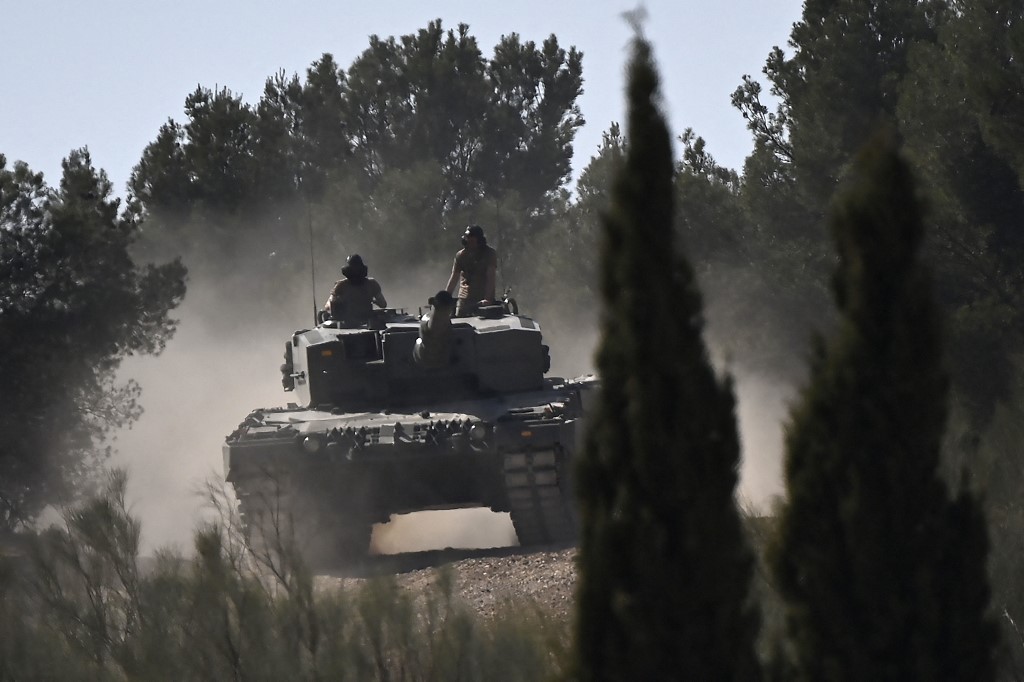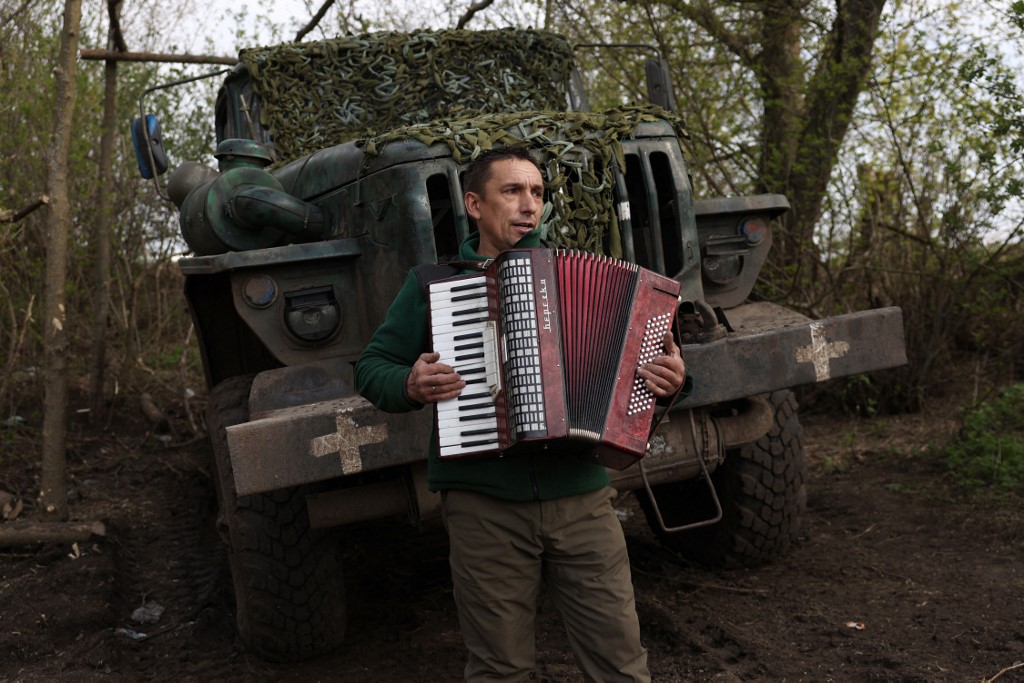As the countdown to Ukraine’s long-awaited spring counteroffensive goes on, army planners have not only got to grapple with getting their assault plans right, ensuring that beans and bullets can be delivered its troops soldiers on time, but also to the rising expectations at home and abroad for a decisive battlefield victory against a powerful Russian opponent.
Tens of thousands of Ukrainian officers and soldiers are now training for their roles in what will undoubtedly be a complex mission. Here are just a few of the operational elements that will need to be addressed: breaking through fortifications; clearing paths through minefields; adjusting artillery fire to avoid hitting advancing, friendly troops; making sure tanks and other armored vehicles don’t run out of fuel; keeping the enemy’s air power at bay; finding, intercepting or destroying Russian reserves before they come into play.
- Check the most recent war in ukraine update in the Kyiv Post's daily news stories released today.
- Check the most up-to-date Ukraine news reports from today.
JOIN US ON TELEGRAM
Follow our coverage of the war on the @Kyivpost_official.
Ever since Russia’s February 2022 invasion, the Armed Forces of Ukraine (AFU) have proven themselves to be capable, fearless and, on occasions, vicious fighters - in defense.
In this next phase the AFU will be attempting its first-ever large-scale, comprehensive, combined arms full-scale attack against Russian forces that have had months to prepare for the assault. In war, things go wrong. As Dwight D Eisenhower said: “Every battle is going to surprise you, no plan survives contact with the enemy.”

UN Security Council Approves US-Backed ‘Neutral’ Resolution on Ukraine
The bigger the operation the greater the chances an army will make mistakes, military observers told Kyiv Post in series of April interviews.

Servicemen belonging to the Ukrainian storm brigade "Bureviy", take part in military exercises outside Kyiv on April 20, 2023. PHOTO:AFP
These interviewees were, however, generally optimistic that once the AFU kicked off their ground assaults, even against heavily defended sectors, the combination of NATO training and equipment, along with Ukrainian soldiers’ motivation and morale, would more than likely allow Ukrainian units to break through or even overrun Russian positions, potentially causing Kremlin forces to suffer severe losses in men, equipment and fighting vehicles.
This optimism was also tinged with some cautioun in predicting how well the AFU could manage the logistic support to a fast-moving offensive. Sergio Miller, a retired British Army intelligence officer, said “A remarkable capacity to sustain 'pick-up and minivan resupply' to defensive enclaves has been demonstrated [by the AFU] for many months - but can this be transformed into conventional resupply of advancing spearheads?”
It will be vital that Ukraine’s military logistics chains which, up to now, have been organized to deliver combat supplies to a relatively static fighting line can deliver the supplies needed to maintain, what is hope to be, fast-advancing combat units is a yet to be answered question. “AFU logisticians have never had to attempt that before,” said Florian Blanaru, a retired Romanian army operations officer.

Ukrainian servicemen of an artillery unit reload as they fire towards Russian positions on the outskirts of Bakhmut, eastern Ukraine on December 30. PHOTO: AFP
“The supply chain goes all the way back to NATO countries. Spare parts, ammunition, replacement components; the right item has to get to the right unit at the right time or there will be delay and an attacking unit will fight less efficiently or have to stop,” Blaranu said.
Western nations’ piecemeal, ad hoc approach to equipping the Ukrainian military has made that task an even bigger headache for Ukrainian supply and maintenance specialists. AFU combat brigades will be operating, almost without exception, a complicated and sometimes head-spinning mix of Soviet and NATO-issue equipment.
The men of the 21st Motorized Brigade will ride into battle, according to recently-leaked Pentagon briefing slides, with a mixture of British tracked infantry fighting vehicles, Canadian wheeled armored personnel carriers, American tracked armored personnel carriers, two types of British armored car, Ukrainian tanks and Italian self-propelled howitzers.
All military observers pointed to the potential risk for Ukrainian ground units, like the 21st, if they succeed in breaking Russian lines and advance deeply into Russia-held territory because, along with supply trucks, critical combat support units such as air defense or field artillery might struggle to follow the tanks and infantry quickly enough.
Trent Telenko, a US-based military analyst, pointed to keeping fuel-hungry tanks topped off with possibly too few fuel trucks to do it as a potential problem the AFU must solve or see its ground attacks grind to a halt.
"The coming Ukrainian counterattack is going to be logistically limited," he said. "Ukraine has been reinforced with US heavy fuel trucks and trailers roughly able to support a U.S. Army force of two to three brigades. (But) its attack force is reported as 40000 (men) and nine brigades."

Ukrainian military personnel receive armoured manoeuvre training on German-made Leopard 2 battle tanks at the Spanish army's training centre of San Gregorio in Zaragoza on March 13. PHOTO: AFP
The coordination and forward displacement of support units to protect ground troops in a fast-moving offensive are, like logistics, “battle orchestration tasks of which Ukraine’s military leadership is very well aware, but hasn’t actually attempted in scale,” retired Australian general Mick Ryan, said in an interview.
Many observers highlighted, that after fighting for over a year, there was a level of Ukrainian national war weariness which was, possibly, leading to too-high an expectation that the offensive would end the war quickly. There was, subsequently the potential for domestic political fall-out, if the assault gains limited ground and demolishes hopes the fighting will end in 2023.
“Ukrainians are anxious for a successful counter-offensive and end to the war by the end of 2023. How will Kyiv cope with less than these maximalist goals? How will Ukrainians cope with setback? A realization that the war could continue into 2024?” Miller said.
An even greater critical pitfall for the upcoming offensive, some analysts said, is among Ukraine’s partner nations. Democratic states have donated political capital, as well as national finances, to Ukraine’s defense against Russia. Some of these may, probably unreasonably, expect that a moderate infusion of NATO-standard equipment into the AFU for a month or two, will turn the war around overnight.
“While the armed forces of Ukraine do not only have one chance to prove themselves during the offensives against the armed forces of the Russian Federation, they also don’t have nine lives in terms of maintaining current levels of support from abroad,” said John Kavulich, Senior Research Editor- Outcome Modeling Analysis, for Issue Insight, the DC-based research platform.
“The perhaps unfair equation is this: Approximately US$200 billion has been committed to Ukraine during the last fourteen months. Those taxpayers who provided the funds, need to see results,” Kavulich said.

A serviceman of Ukrainian 80th separate airborne assault brigade, plays accordion during the rest on the front line near Bakhmut in Donetsk region on April 18. PHOTO: AFP
Double-headed pressure from the US government and the Ukrainian public to deliver results might incline the Ukrainian national leadership to force combat commanders into taking unwise risks or to attempt to cover up offensive failures, he said.
There is a slight, if unlikely fear, that the Russian military could reinforce its front-line units with previously unidentified reserves of personnel, anti-tank weapons and stockpiled artillery ammunition, supported by massed kamikaze drones strikes that might blunt the offensive and confront Ukraine and its supporters with unexpectedly heavy casualties and a prospect of a war they cannot win quickly.
The real danger for the upcoming Ukrainian attack, would most likely be success that was considered as too moderate compared with the cost; the liberation of too little Ukrainian territory combined with a clear demonstration that the Russian army is unlikely to quit or go home any time soon would be construed as failure.
“Unsuccessful offensives, particularly with high casualties, will have a catastrophic impact upon continued commercial, economic, humanitarian, military, and political support for Volodymyr Zelensky. It could be a near but not quite … extinction-level event for the government of Ukraine in terms of maintaining support from outside of Ukraine,” Kavulich said.
“Limited gains for significant expenditure of resources: The worst-case scenario [would be] limited gains without strategic significance costing dearly in lives and equipment,” Miller said.
But as Eisenhower once said: “In preparing for battle I have always found that plans are useless, but planning is indispensable.” With that in mind, Ukraine puts its trust in its commanders and leaders.
You can also highlight the text and press Ctrl + Enter











